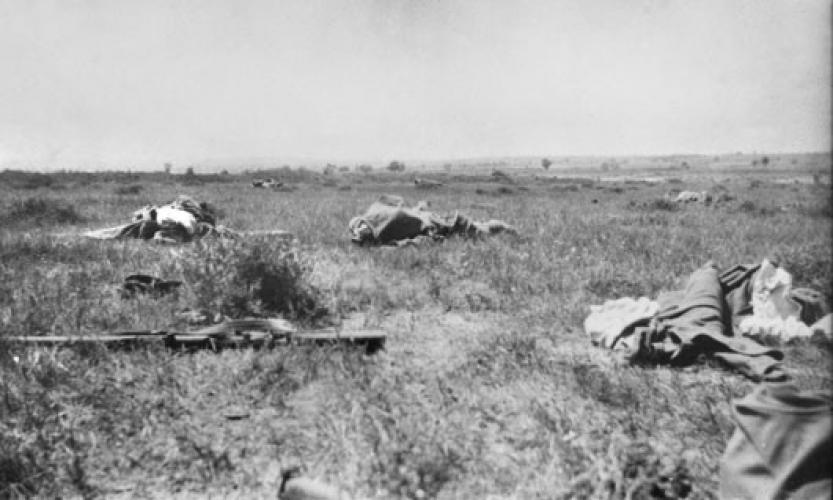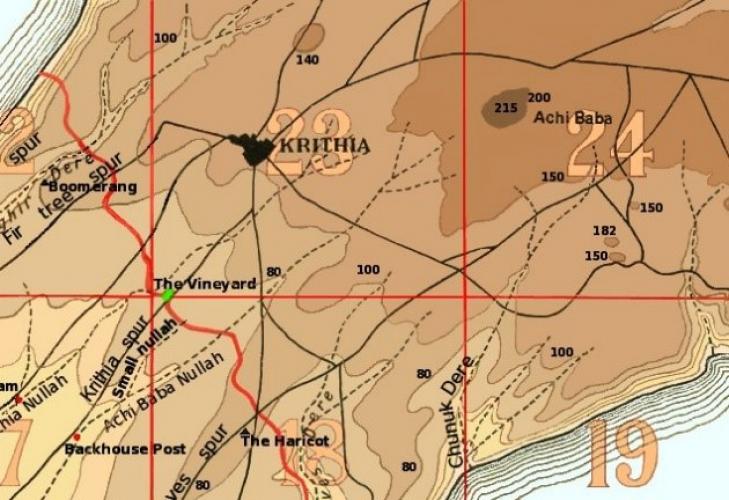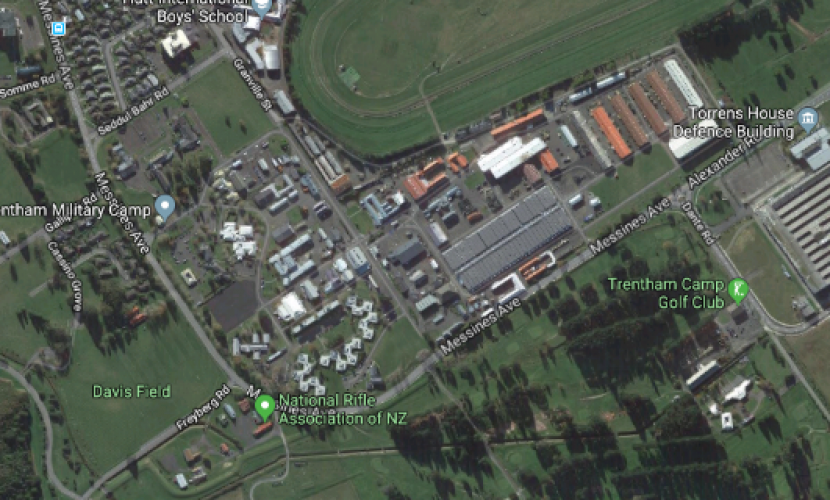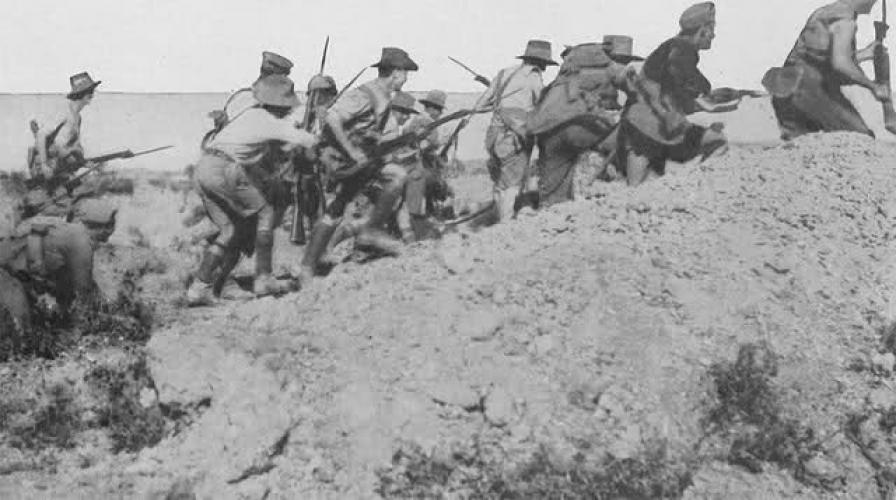294 Krithia Cres TMC Upper Hutt, this street is within the camp compound
Reason for the name
This street was named after the battle of Krithia, fought on the Gallipoli peninsula during World War I. Most streets within NZDF Camps and Bases are named in honour of prominent people, battles, campaigns, ships, aircraft and places creating a rich history of our military service. Many street names in Trentham Camp have been changed over the years as the Camp has gone through various stages of development.
The First Battle of Krithia was the first Allied attempt to advance in the Battle of Gallipoli during the First World War. Starting on 28 April, three days after the Landing at Cape Helles, the attack broke down due to the defensive power of the Ottoman opposing forces, poor leadership and planning, lack of communications and exhaustion and demoralisation of the troops.
The Second Battle of Krithia continued the Allies' attempts to advance on the Helles battlefield during the Battle of Gallipoli of the First World War. The village of Krithia and neighbouring hill of Achi Baba had to be captured in order for the British to advance up the Gallipoli peninsula to the forts that controlled passage of the Dardanelles straits. A small amount of ground was captured after two days of costly fighting but the objectives remained out of reach.
The Third Battle of Krithia, was the last in a series of Allied attacks against the Ottoman defences aimed at achieving the original objectives of 25 April 1915. The previous failures in the first and second battles resulted in a less ambitious plan being developed for the attack, but the outcome was another costly failure for the Allies. The allied aim was, as always to facilitate the capture of Alçı Tepe (Achi Baba) which commanded most of the peninsula.
Author: The Poppy Places Trust
The first battle commenced around 8:00 a.m. on 28 April with a naval bombardment. The plan of advance was for the French to hold position on the right while the British line would pivot, capturing Krithia and assailing Achi Baba from the south and west. The overly-complex plan was poorly communicated to the brigade and battalion commanders of the 29th Division who would make the attack. Hunter-Weston remained far from the front; because of this, he was not able to exert any control as the attack developed. The initial advances were easy but as pockets of Ottoman resistance were encountered, some stretches of the line were held up while others kept moving, thereby becoming outflanked. The further up the peninsula the troops advanced, the more difficult the terrain became, as they encountered the four great ravines that ran from the heights around Achi Baba towards the cape.
On the extreme left, the British ran into Gully Ravine which was as wild and confusing as the ground at Anzac Cove. Two battalions of the 87th Brigade (1st Border Regiment and 1st Royal Inniskilling Fusiliers) entered the ravine but were halted by a machine gun post near 'Y' Beach. No further advance would be made up the ravine until the 1/6th Gurkha Rifles captured the post on the night of 12/13 May. This involved them going up a 300-foot (91 m) vertical slope, which had defeated the Royal Marine Light Infantry and the Royal Dublin Fusiliers. The site became known as 'Gurkha Bluff'. The exhausted, demoralised and virtually leaderless British troops could go no further in the face of stiffening Ottoman resistance. In places, Ottoman counter-attacks drove the British back to their starting positions. By 6:00 p.m. the attack was called off.
The second Allied advance began later than scheduled, around 11:00 on 6 May, and was swiftly halted by strong Ottoman resistance. The 88th Brigade of the 29th Division advancing on Fir Tree Spur managed to capture Fir Tree Wood, and the 6th (Hood) Battalion of the British 63rd (Royal Naval) Division advanced strongly along Kanli Dere, but at all points on the line the gains were never more than 400yd (370 m). At no point were the Ottoman defences reached. The attack was resumed on 7 May; it used the same plan and produced largely the same results.
On the morning of 8 May, the 88th Brigade in front of Krithia on Fir Tree Spur was relieved by the New Zealanders who made yet another attempt which failed with huge losses. The Wellington, Canterbury and Auckland Battalions gained another 400yd (370 m) through Fir Tree Wood to a place called the 'Daisy Patch' before they became pinned down. Enfiladed on the left from Ottoman machine guns in Gully Ravine, they could neither advance nor withdraw and still had no sight of the Ottoman positions.
Despite their predicament, Hunter-Weston ordered the New Zealanders, including the Otago Battalion in reserve, to resume that attack at 17:30. The brigade commander, Colonel Francis Johnston, protested but Hunter-Weston insisted the attack proceed. However, General Sir Ian Hamilton, commander of the Mediterranean Expeditionary Force, who had landed at Helles to oversee the battle, ordered a general advance to be made at 17:30 along the entire front with the aim of capturing Krithia and Achi Baba.
The Australian 2nd Infantry Brigade, under the command of Brigadier-General McCay, was given 35 minutes warning that it was about to join the attack. The Australians were to advance along Krithia Spur between the right flank of the New Zealand brigade and the edge of Kanli Dere, and had to travel up to 800yd (730m) from their reserve position just to reach the start line at "Tommy's Trench". The brigade managed to advance a further 500yd (460m) beyond the start line, suffering 50% casualties in the process.
The New Zealand brigade made another attempt to cross the Daisy Patch, and some troops managed to actually sight the Ottoman trenches. On the right, the French resumed their advance at 18:00 and made good progress, reaching the Ottoman trenches on Kereves Dere. They managed to capture and hold Bouchet Redoubt but were forced back everywhere else.









